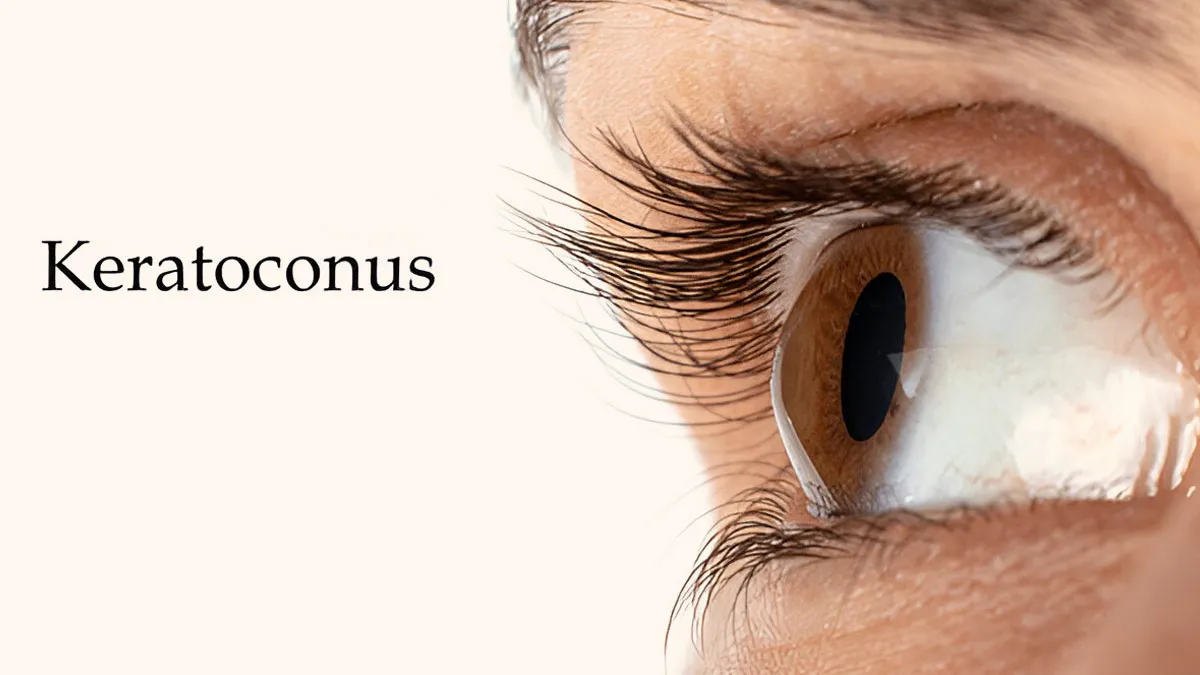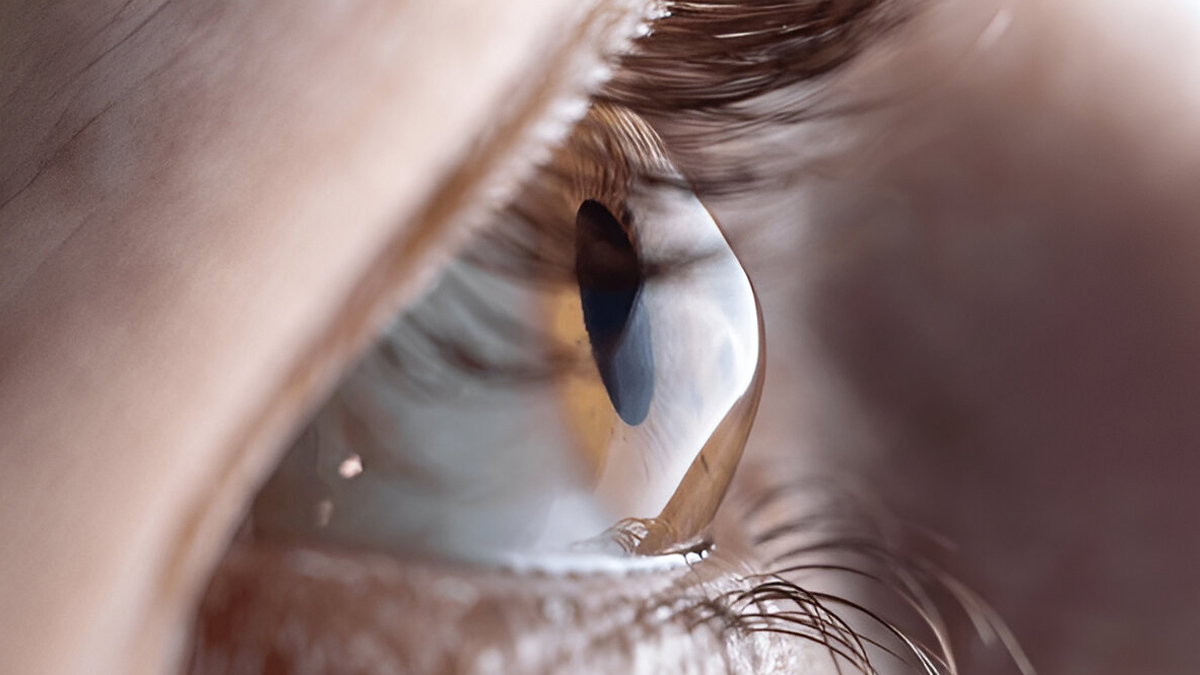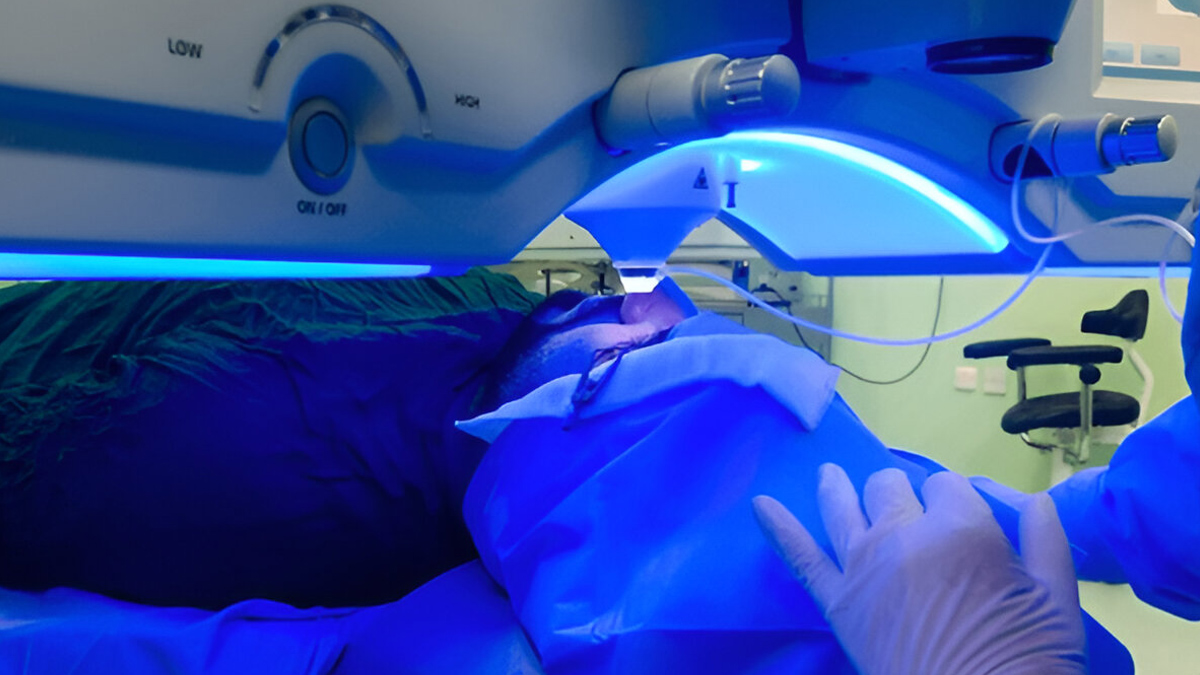
Have you ever noticed your glasses prescription changing every few months, or felt like night driving has suddenly become a blur? For many young adults, these signs are often brushed off as minor vision issues or eye strain from endless screen time. But sometimes, they’re early signs of keratoconus, a progressive eye condition that, if left undetected, can quietly change the way you see the world.
Table of Content:-
We spoke to Dr M Soundaram, MBBS, MS, FCAEH, Ophthalmology, Apollo Spectra Hospital, Chennai, who explained keratoconus, its signs, causes, and treatment measures.
What Is Keratoconus?

“Keratoconus is a progressive eye disease that causes the cornea to thin and protrude, eventually developing into a cone-shaped deformity. This interferes with the typical shape of the cornea, causing blurred vision. The disease is relatively uncommon; however, it can inflict a lot of damage upon your eyes, along with the quality of your life,” explained Dr Soundaram.
Causes Of Keratoconus
Although the exact cause of the condition remains unknown, it tends to happen due to a range of environmental, hereditary, and biochemical causes. If there is a family history of cornea-related issues, the chances of developing the disorder are significantly higher. Moreover, constant rubbing of the eyes may also lead to the development of keratoconus.
A large case-control study of 118 keratoconus patients vs 73 controls found that eye rubbing increased risk by over sevenfold (adjusted OR 7.36), making it one of the most significant modifiable behavioural risk factors. Other contributors included male sex and exposure to dust. The findings highlight chronic mechanical trauma to the cornea, particularly through rubbing, as a key trigger in disease development and progression.
Also Read: Do Late Nights Really Cause Dark Circles? Find Out Here
Symptoms Of Keratoconus

“The signs of the disease become visible during late teens or early twenties. At the initial stages, patients may report frequent changes in their eyeglass prescriptions and experience difficulty with night vision,” said Dr Soundaram.
As the disease progresses, an individual's vision can become even more blurred or distorted, and under these circumstances, contact lenses may not provide sufficient clarity of vision.
Keratoconus can take several years to stabilise, but the severity of the disease will vary among different patients. In some instances, it may develop into a situation where it cannot be corrected using contact lenses or glasses, and a much more advanced treatment will be required.
How To Diagnose Keratoconus?
“Early diagnosis of keratoconus is essential to prevent any significant visual deterioration. A thorough eye screening, such as eye topography, pachymetry, and slit-lamp assessment, is vital. Corneal topography, which helps in analysing the curvature of the cornea, is effective in detecting early signs of keratoconus even before the symptoms arise,” said Dr Soundaram.
In more severe cases, corneal scarring or hydrops, a condition caused by fluid entry through a ruptured membrane, may occur, leading to sudden corneal swelling. This not only reduces vision but further complicates the treatment.
Also Read: Are Blue-Light-Filter Glasses Actually Useful? Expert
How To Treat Keratoconus?

As with any medical condition, the treatment depends on the severity of the disease. During the early phases, spectacles or self-made, manufactured hard-gas permeable contact lenses can be beneficial in correcting irregular astigmatism due to the cone-like structure around the cornea.
“An effective treatment procedure for treating this condition is Corneal Collagen Cross-linking (CXL). During this procedure, riboflavin (vitamin B2) eye drops are applied, followed by exposure of the cornea to ultraviolet light. This reinforces the corneal collagen filaments, slowing down the progression of the disease. CXL is effective, particularly among young individuals with progressive keratoconus,” explained Dr Soundaram.
In severe cases where vision is highly compromised, surgical interventions may be considered. These procedures include Intracorneal Ring Segments (ICRS), which flatten the cone and improve vision; in some instances, corneal transplantation may also be performed.
Bottomline
Dr Soundaram concluded, "Keratoconus is a serious condition that often goes undetected. Eye checks should be conducted periodically among young individuals, particularly those with any form of allergy, as well as those with a family history of cornea-related diseases, and individuals who have a habit of continuous eye rubbing. Although the condition has many challenges, with timely diagnosis and proper treatment, an individual could retain their functional vision."
[Disclaimer: This article contains information provided by an expert and is for informational purposes only. Hence, we advise you to consult your professional if you are dealing with any health issue to avoid complications.]
Also watch this video
How we keep this article up to date:
We work with experts and keep a close eye on the latest in health and wellness. Whenever there is a new research or helpful information, we update our articles with accurate and useful advice.
Current Version